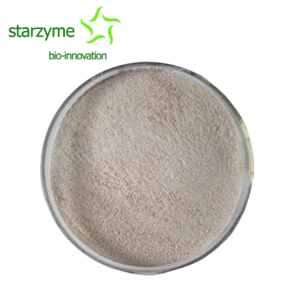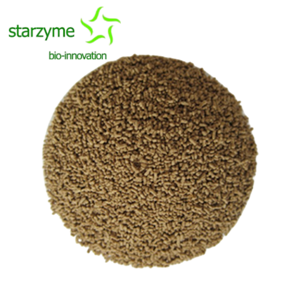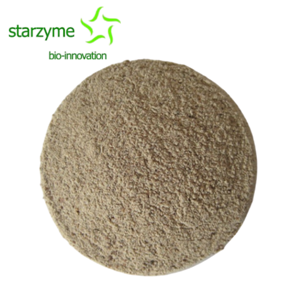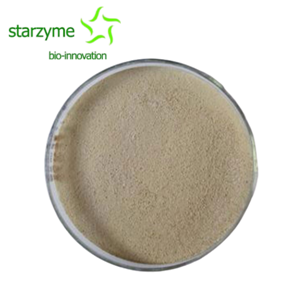Amylase and Cellulase As Feed Enzymes
Amylase as a Feed Enzyme
Alpha amylase, derived from Bacillus subtilis, Bacillus licheniformis, and Aspergillus niger, has an optimal pH of 5.0-7.0, high temperature resistance, and belongs to endonucleases. It randomly hydrolyzes alpha-1,4 glycosidic bonds in starch molecules to generate dextrins and oligosaccharides. Adding Amylase as a Feed Enzyme to the feed of young animals (piglets, chicks) can compensate for the deficiency of endogenous enzymes and improve starch digestion rate.
β - amylase, derived from barley and sweet potato (plant extracts); Bacillus subtilis (microbial fermentation), with an optimal pH of 5.0-6.5, has weak temperature resistance and belongs to the exolytic enzyme. It hydrolyzes β -1,4-glycosidic bonds from the non reducing end of starch to produce maltose. Used in conjunction with alpha amylas as a Feed Enzymeto enhance maltose production in feed enzymes, improve palatability, and assist in the decomposition of plant-based starch (such as wheat and corn) in aquatic feed.
Saccharifying Feed Enzyme (glucose amylase), derived from Aspergillus niger and Rhizopus purpureus, with an optimal pH of 4.0-5.0 and moderate temperature resistance (50-60 ℃), belongs to exolytic feed enzymes. It hydrolyzes the alpha-1,4 and alpha-1,6 glycosidic bonds at the non reducing end of starch to produce glucose. The use of feed enzymes can increase glucose content, promote energy absorption (especially suitable for high starch diets), and when combined with proteases, reduce intestinal fermentation gas production and lower diarrhea rates.
Isoamylase (debranching Feed Enzyme), derived from gas producing bacteria and Bacillus subtilis, is most suitable for pH 6.0-7.0 and temperature around 50 ℃. It belongs to the specific hydrolysis of α -1,6 glycosidic bonds in branched starch, producing linear starch. Used to decompose resistant starch (such as amylopectin in beans) and reduce intestinal bloating.
Cellulase as a Feed Enzyme
Endo β -1,4-glucanase, derived from Trichoderma and Aspergillus niger, has an optimal pH of 4.5-5.5 and moderate temperature resistance (40-50 ℃). It belongs to endo enzymes and randomly hydrolyzes β -1,4-glycosidic bonds inside cellulose to generate short chain fiber oligosaccharides. Used to decompose cellulose in plant cell walls, improve the energy utilization efficiency of grain (such as wheat, barley) feed, and alleviate the problem of high intestinal viscosity caused by fiber in monogastric animals (pigs, poultry).
Extracellular β -1,4-glucanase, derived from Penicillium and Bacillus, is most suitable for pH 5.0-6.0 and has weak temperature resistance (35-45 ℃). It belongs to the extracellular enzyme and hydrolyzes β -1,4-glycosidic bonds from the non reducing end of cellulose chains to produce cellulose disaccharides. It can work as a Feed Enzyme synergistically with endonucleases to improve the complete decomposition efficiency of fibers and assist in the degradation of roughage in ruminant feed.
β - glucosidase, derived from Aspergillus niger and Rhizopus, has an optimal pH of 4.0-5.5 and low temperature resistance (30-40 ℃). It can hydrolyze the β -1,4-bonds of cellulose disaccharides and oligosaccharides to produce glucose. As a Feed Enzyme can reduce the accumulation of fiber decomposition products (such as fiber disaccharides), prevent inhibition of endonuclease activity, and improve the energy value of fiber fermentation end products.




